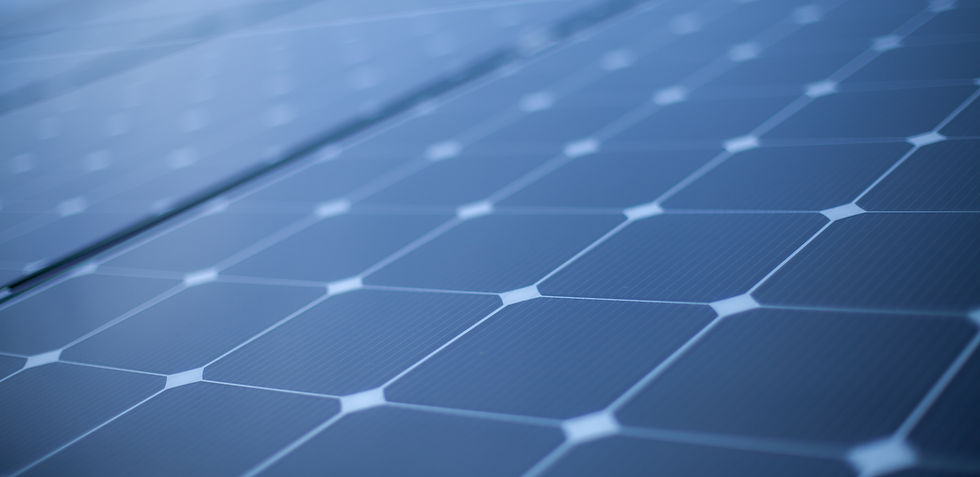Life Cycle Assessment (LCA) is a method used to assess the environmental impact of a product from its raw material extraction to its disposal. In the case of a crystalline silicon solar panel, passive components such as the aluminium frame and glass play a major role in determining the LCA. Additionally, here is a brief comparison of LCAs and some other metrics, such as LCOE (levelized cost of electricity).
Some Factors Influencing LCA and LCOE
Design and Form Factor: Compact designs can reduce material usage, thus lowering both LCOE and LCA.
Material Selection: Choosing low-impact materials can significantly reduce LCA.
Supply Chain: Local sourcing can reduce transportation emissions.
Production Methods: Cleaner production technologies can lower both LCA and LCOE.
1) Standard Silicon-Based Solar Panels
These are the most common type of solar panels, made from crystalline silicon. They offer high efficiency but are also more energy-intensive to produce.

The LCA for standard silicon-based panels is dominated by energy-intensive processes. The aluminium frame contributes 20-30% of the embodied energy, the glass front cover contributes 15-20%. The silicon cells account for 40-50% due to their high-temperature (up to 2000°C) manufacturing process.
Life Cycle Assessment (LCA): This measures the environmental impact of the panel from production to disposal. For standard panels, it's high due to energy-intensive processes. Specifically, it requires 170-200 MJ/kg of energy for production.
CO2 Emissions: These panels emit 40–50 grams of CO2 equivalent per kilowatt-hour (gCO2e/kWh) of electricity generated during the first years of operation. This is a measure of their carbon footprint.
Energy Payback Time: This is the time it takes for the panel to generate the amount of energy that was used to produce it. For standard panels, it's 2–3 years.
Levelized Cost of Electricity (LCOE): This is the average cost of producing electricity using these panels. It ranges from $20–$60 per megawatt-hour (MWh).
2) Thin-Film Panels
Thin-Film Panels are made by depositing layers of photovoltaic material onto a substrate like glass or plastic. They are more flexible and lighter compared to traditional silicon-based panels.

Image credit: Fieldsken Ken Fields.
LCA: These panels are less taxing on the environment, requiring around 120-140 MJ/kg of energy for production.
CO2 Emissions: They emit 30–40 gCO2e/kWh.
Energy Payback Time: It takes 1.5–2 years for these panels to 'pay back' the energy used in their production.
LCOE: The cost ranges from $30–$50/MWh.
3) Perovskite Panels
Perovskite solar panels use perovskite crystal structured compounds as the photovoltaic layer. These compounds are a mix of organic and inorganic materials, offering the potential for high efficiency and low production costs. However, they are still in the developmental stage and not yet widely commercialised.

LCA: These are still in the developmental stage but promise to be even less impactful, requiring only about 80-100 MJ/kg.
CO2 Emissions: Estimated at 20–30 gCO2e/kWh.
Energy Payback Time: Estimated to be less than 1 year.
LCOE: The estimated cost is between $10–$40/MWh.
4) Organic Photovoltaics (OPV)
OPVs use organic materials, often in the form of polymers, for the photovoltaic layer. They are highly flexible, lightweight, and can even be semi-transparent, opening up new avenues for solar applications like window coatings.

Image Credit: epishine.com
LCA: These have the least environmental impact, requiring only about 60-80 MJ/kg for production.
CO2 Emissions: They emit only 10–20 gCO2e/kWh.
Energy Payback Time: Less than 1 year.
LCOE: The cost is between $20–$40/MWh.
5) Multi-Junction Solar Panels
Multi-junction solar panels consist of multiple layers of different semiconductor materials, each designed to absorb a specific range of the solar spectrum. This enables them to achieve higher efficiencies compared to single-junction panels. They are commonly used in space applications and concentrated solar power systems.

Photo credit: NASA/George Shelton
Key Metrics Considerations for Multi-Junction
Life Cycle Assessment (LCA): Due to the complexity of their structure and the use of rare materials, multi-junction panels can have a higher environmental impact. However, their higher efficiency can offset this over their lifetime.
CO2 Emissions: The CO2 emissions are generally comparable to or lower than those of silicon-based panels due to their higher efficiency, but this can vary depending on the materials used.
Energy Payback Time: The energy payback time is generally shorter than that of silicon-based panels, often less than 2 years, due to their higher efficiency.
Levelized Cost of Electricity (LCOE): The LCOE can be higher due to the initial cost of the panels and the need for tracking systems in concentrated solar power applications. However, this is often offset by their higher efficiency and longer lifespan.
For further reading, you may find this article insightful:

Comments